Kobold: Mythological Spirit Of Underground: Guardian Of Miners And Earth’s Treasures
A. Sutherland - AncientPages.com - Known in various mythologies under different names such as 'Knocker', 'Coblynau', 'Kobold' or 'Skarbnik' (The Treasurer), these mythological spirits were believed to be a species of fairies that had their dwellings in the rocks and crevices. Still, their homes were invisible to mortal eyes.
They made noises and knocks to announce their presence, the presence of metal and minerals, or they could assist a miner giving helpful tapping warnings of looming danger.
These ugly, often naughty creatures stole candles, hid clothes, and picked. Sometimes they were malevolent by threatening miners during their hard and dangerous work.
Belief in these mine spirits was once widespread, especially in Celtic areas heavily mined, for example, Wales and Cornwall. In German folklore, known as Kobolds, they were known as Kobolds ("good house" or "rogue") of German fairy lore are a species of fay very similar to the knockers of England living in mine and take pleasure in playing tricks on people.
Initially, they seem to come from Cornwall, but there are many variations across Europe. In Finland, they are known as Paras, and in Scotland called the Black Dwarves. All these figures have in common that they both can be helpful and troublesome.
They are known as 'knockers' in Cornwall, and their German relatives are 'Kobolds'. The Cornish' knocker' is a 'Coblynau' in Wales.
In ancient Slavic beliefs, there is a 'spirit living in the underground (especially mining), guarding the natural resources of the earth and buried treasures. The so-called Treasurer', (in Polish' Skarbnik', is known under different Slavic names) and is very similar to the 'knicker' or 'Coblynau'
In Slavic folklore, "the Treasurer" appeared most often in the form of an old miner. Credit: Krystian Hasterok - CC BY 2.5
People believed the spirit was the ruler of the underground kingdom, which took the souls of the miners who died while working in the mine.
The 'Treasurer' appeared most often in the form of an old, bearded miner with a torch in his hand. He could also take the form of a goat, horse, dog, mouse, frog, spider, flies. He might as well be invisible; the miner could sense their presence or hear knocking.
The worst thing one can do is to swear or whistle. The knocker does not like it, so the miners used to leave some to be on good terms with the knocker. In Germany, the miners greeted the knockers by lifting their helmets before they went into the mine.
The knockers appear under different names in the folklore of many cultures as the most persistent of all mining superstitions that accompany miners.
At night, knockers – almost as long as humans dressed in red coats, knees belts, and handkerchiefs tied around their heads – leave the mines to dance in the moonlight.
In Bohemia, a historical region in central Europe flanked by Germany, Poland, the Czech historical region of Moravia, and Austria, ancient people also believed in 'knocker,' an underground creature known as the haus-schmiedlein ("little house-smiths"). Bohemia's mythological knockers were also associated with the sound of a smith working hard at his anvil or with a miner.
Drawing of a Kobold. Credit: JNL - Public Domain
People believed that whenever a miner's death is imminent, they would knock three times upon the wall; when an accident was about to occur, they could imitate the sounds of miners at work.
It is relatively easy to understand that the dark, confined, and dangerous interior of a mine would be conducive to creating belief in supernatural creatures and other superstitions that 'surrounded' hard-working miners.
Many miners considered them ghosts of dark underground realms, and to keep on their good side, they would leave a portion of their food for them.
Updated on December 4, 2021
Written by – A. Sutherland - AncientPages.com Senior Staff Writer
Copyright © AncientPages.com All rights reserved. This material may not be published, broadcast, rewritten or redistributed in whole or part without the express written permission of AncientPages.com
More From Ancient Pages
-
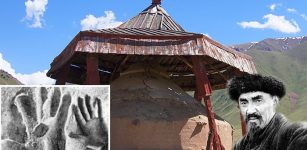 Real Giant Kojomkul Who Became A Folk Hero In Kyrgyzstan
Featured Stories | Dec 2, 2020
Real Giant Kojomkul Who Became A Folk Hero In Kyrgyzstan
Featured Stories | Dec 2, 2020 -
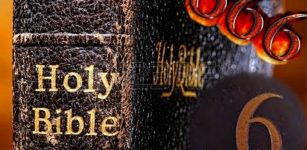 Sacred Number Six And Its Symbolic Significance In Ancient Cultures
Ancient Symbols | Dec 27, 2017
Sacred Number Six And Its Symbolic Significance In Ancient Cultures
Ancient Symbols | Dec 27, 2017 -
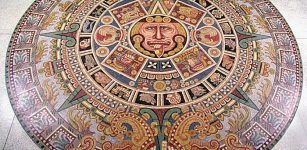 Aztecs’ Five Suns Creation Myth And Prophecy
Aztec Mythology | Jul 18, 2018
Aztecs’ Five Suns Creation Myth And Prophecy
Aztec Mythology | Jul 18, 2018 -
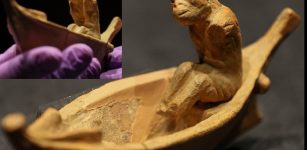 The 2,400-Year-Old Figurine Of Charon -The Ferryman Of The Dead – On Display In Izmir, Turkiye
Archaeology | Nov 21, 2022
The 2,400-Year-Old Figurine Of Charon -The Ferryman Of The Dead – On Display In Izmir, Turkiye
Archaeology | Nov 21, 2022 -
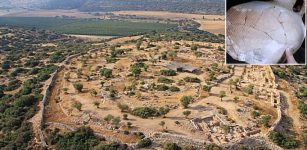 Biblical Tefach: Amazing ‘Common Constant’ Found Among Ancient Storage Jars In Israel
News | Oct 14, 2020
Biblical Tefach: Amazing ‘Common Constant’ Found Among Ancient Storage Jars In Israel
News | Oct 14, 2020 -
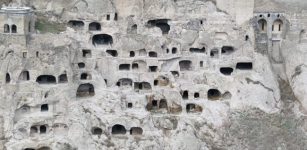 Spectacular Vardzia Cave Monastery – Huge Underground Complex Founded By The ‘Mountain Queen’ Tamar
Featured Stories | Dec 28, 2015
Spectacular Vardzia Cave Monastery – Huge Underground Complex Founded By The ‘Mountain Queen’ Tamar
Featured Stories | Dec 28, 2015 -
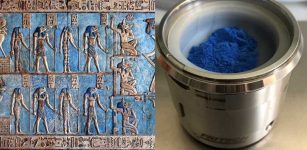 Ancient Egyptian Blue Used To Create New Nanomaterial 100,000 Times Thinner Than A Human Hair
Ancient Technology | Mar 24, 2020
Ancient Egyptian Blue Used To Create New Nanomaterial 100,000 Times Thinner Than A Human Hair
Ancient Technology | Mar 24, 2020 -
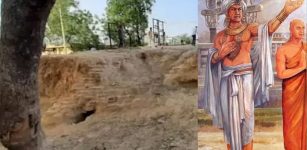 Discovered 2000-Year-Old Mauryan Structure May Lead To The Lost Ashoka Pillar Site
Archaeology | Sep 30, 2021
Discovered 2000-Year-Old Mauryan Structure May Lead To The Lost Ashoka Pillar Site
Archaeology | Sep 30, 2021 -
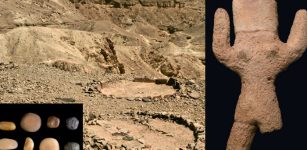 Ancient Artifacts Used In Magical Rituals To Ward Off The Evil Eye Found Next To The Pilgrimage Road
Archaeology | Sep 11, 2023
Ancient Artifacts Used In Magical Rituals To Ward Off The Evil Eye Found Next To The Pilgrimage Road
Archaeology | Sep 11, 2023 -
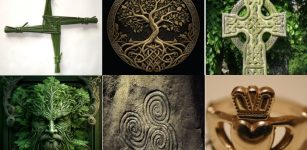 10 Ancient Celtic Symbols Explained
Ancient Symbols | Sep 9, 2023
10 Ancient Celtic Symbols Explained
Ancient Symbols | Sep 9, 2023 -
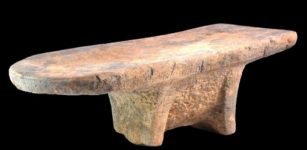 Evidence Of A 2,000-Year-Old Curry, The Oldest Ever Found In Southeast Asia
Featured Stories | Jul 25, 2023
Evidence Of A 2,000-Year-Old Curry, The Oldest Ever Found In Southeast Asia
Featured Stories | Jul 25, 2023 -
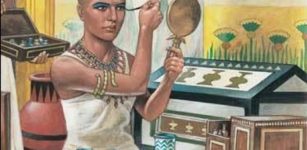 Ancient Egyptian Cosmetics – Why Was It So Important To Both Men And Women?
Ancient History Facts | May 19, 2020
Ancient Egyptian Cosmetics – Why Was It So Important To Both Men And Women?
Ancient History Facts | May 19, 2020 -
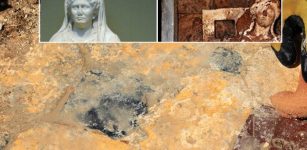 Sun Disk Unearthed On 3,500-Year-Old Rock Altar In Thracian Settlement, Edirne, NW Turkey
Archaeology | Sep 26, 2020
Sun Disk Unearthed On 3,500-Year-Old Rock Altar In Thracian Settlement, Edirne, NW Turkey
Archaeology | Sep 26, 2020 -
 Nue – Mysterious Mythological Shape-Shifting Creature Transforming Into A Black Cloud
Featured Stories | Jun 12, 2020
Nue – Mysterious Mythological Shape-Shifting Creature Transforming Into A Black Cloud
Featured Stories | Jun 12, 2020 -
 Satellite Images Of 66 New Roman Army Sites Show More Clues About One Of The Empire’s Most Infamous Conflicts
Archaeology | Dec 23, 2020
Satellite Images Of 66 New Roman Army Sites Show More Clues About One Of The Empire’s Most Infamous Conflicts
Archaeology | Dec 23, 2020 -
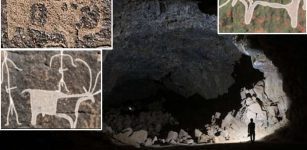 Human Occupation In Lava Tube Cave In Saudi Arabia – First Evidence Discovered
Archaeology | Apr 18, 2024
Human Occupation In Lava Tube Cave In Saudi Arabia – First Evidence Discovered
Archaeology | Apr 18, 2024 -
 Ancient Maya Astronomers Predicted Meteor Showers 2 Millennia Ago – Mayan Hieroglyphic Inscriptions Reveal
Archaeology | Sep 12, 2017
Ancient Maya Astronomers Predicted Meteor Showers 2 Millennia Ago – Mayan Hieroglyphic Inscriptions Reveal
Archaeology | Sep 12, 2017 -
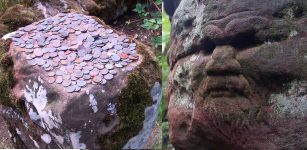 Dunino Den: Mysterious And Sacred Ancient Site In Scotland With Enigmatic Rock Faces And Symbols
Featured Stories | Jan 6, 2017
Dunino Den: Mysterious And Sacred Ancient Site In Scotland With Enigmatic Rock Faces And Symbols
Featured Stories | Jan 6, 2017 -
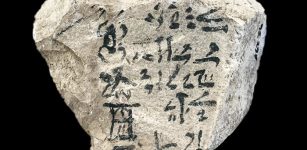 Earliest Version Of Our Alphabet Possibly Discovered
Archaeology | May 17, 2018
Earliest Version Of Our Alphabet Possibly Discovered
Archaeology | May 17, 2018 -
 Jelling Stone And Legendary Harald ‘Bluetooth’ King Of Denmark – ‘Who Made The Danes Christian’
Vikings | Oct 10, 2015
Jelling Stone And Legendary Harald ‘Bluetooth’ King Of Denmark – ‘Who Made The Danes Christian’
Vikings | Oct 10, 2015



